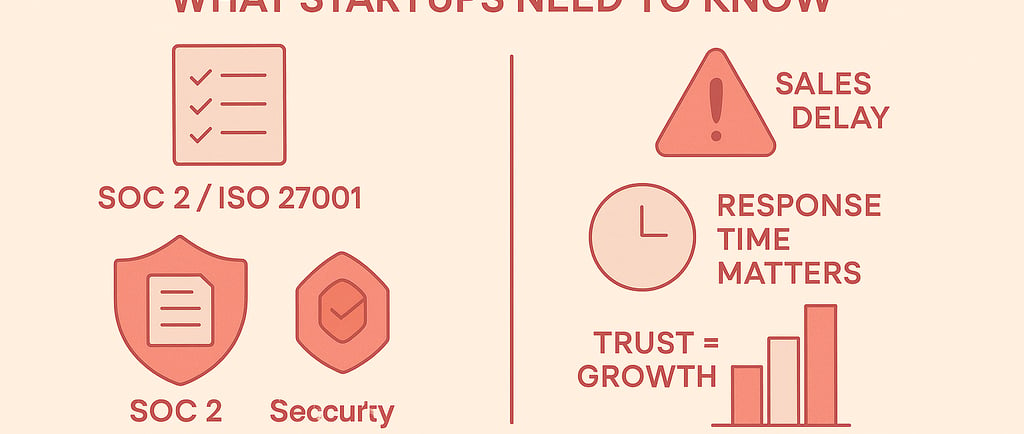What Is a Security Questionnaire (and How to Ace It as a SaaS Vendor)
If you're an expanding SaaS business, securing enterprise customers is a big win. But just as you're finalizing the deal—you're confronted with a security questionnaire. Pages of technical, compliance, and infrastructure questions. Ring a bell?


Security questionnaires are a central component of Third-Party Risk Management (TPRM), and they're getting tougher with each quarter. Here's what you need to know—and how to ace them with confidence.
What Is a Security Questionnaire?
Security questionnaire is a document or electronic format that enterprise buyers send to assess the cyber posture and risk profile of their suppliers. It's commonly part of their TPRM and utilized to:
Recognize data protection vulnerabilities
Verify regulatory compliance (e.g., SOC 2, ISO 27001, HIPAA, GDPR)
Determine business continuity, encryption policy, access controls, and more
These surveys may have anywhere from 50 to more than 300 questions, varying by industry and customer risk tolerance.
Why Startups Need to Take Them Seriously
Security questionnaires are not another procurement document—they're a revenue gatekeeper. If your responses are not up to par, you stand to lose:
The deal
Extending the sales cycle
Being marked as a high-risk supplier
Destroying your reputation with strategic accounts
Most customers now insist that vendors present SOC 2 Type II reports, ISO 27001 certificates, or pen test results simply to be in the running.
How Security Questionnaires Fit into Third-Party Risk Management (TPRM)
TPRM is how businesses handle the risks of doing business with outside vendors, particularly those who process or store sensitive information. Security questionnaires are the first line of this effort.
By answering a questionnaire well, you are not only safeguarding your customer—you're showing that you know your own risk landscape, which is a trust and credibility builder.
Preparation and Effectiveness to Respond
Here's how to make security questionnaires a strategic asset rather than a blocker:
1. Centralize Your Documentation
Have a security packet that contains:
SOC 2 / ISO 27001 certifications
Penetration test reports done in the last few months
Business continuity plans
Encryption, access control, and incident response policies
2. Use Automation Tools Wisely
Platforms like Whistic, SecurityScorecard, or Conveyor help automate questionnaire responses and map them to industry frameworks. Tools like these can cut down turnaround time drastically.
3. Pre-empt Common Questions
Most questionnaires cover:
Data storage & encryption
Incident response procedures
Access management
Vendor oversight
Compliance with standards (e.g., HIPAA, GDPR, PCI-DSS)
By proactively addressing these in your documentation, you’ll reduce friction.
4. Map Controls to Recognized Frameworks
Connect your practices to SOC 2 controls or ISO 27001 Annex A. Customers need to know that your practices meet industry standards—even if you're not completely certified (yet).
5. Seek Expert Assistance
If you're getting bogged down or need to scale responses across clients, partner with someone like Verusava. We prep SaaS startups once and respond quickly, so sales don't stall over security.
Final Thoughts
Security questionnaires are not going away—and they're not getting easier. But with proper preparation, your startup can make them an opportunity to establish trust, speed up sales, and grow your security program.
Need assistance creating your security documentation or getting ready for a SOC 2 audit? Verusava has got you covered.
Reach out to find out how we assist startups in winning with intelligent compliance and TPRM readiness.
